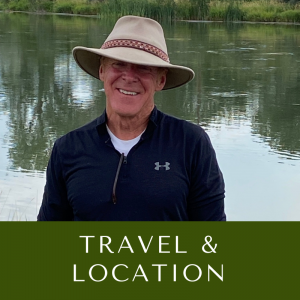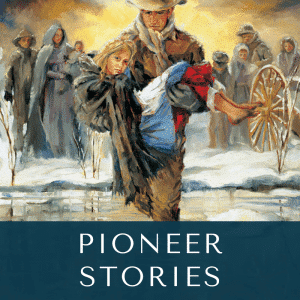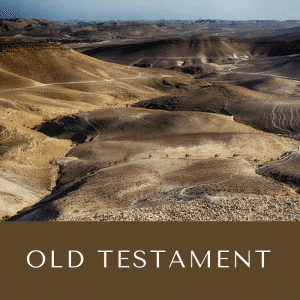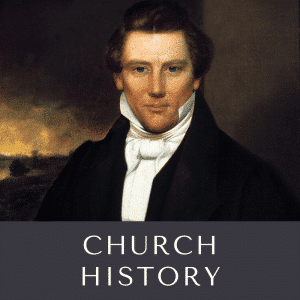Description
He Just Would Not Quit!
Joseph Angell Young was born in 1834 in Kirtland, Ohio the oldest son of Brigham Young and Mary Ann Angell.
In 1852, Joseph married. In 1854 he was called to serve as a missionary in England where he would labor for the next two years.
Joseph returned home the first week of October 1856, and notwithstanding he had been gone for two years from his family, he answered the call of his father, the Prophet, and went back out on the plains to bring in the late emigrants.
He rode out with the first group on October 7, 1856. One week later, Captain George D. Grant, sent four men on ahead as express riders to find the James G. Willie Handcart Company. Joseph A. was one of those advanced express riders.
They found the Willie company near the Fifth Crossing of the Sweetwater. Tears filled Joseph’s eyes when he saw their starved and suffering condition. He instructed the Company to keep moving— that wagons with supplies were moving toward them on the trail.
Then Joseph and the other three riders continued east looking for the other three missing companies. They stopped at Devils Gate and waited for Captain Grant and the rescue wagons to catch up. By now the storms had come. The snow was deep, and it was very cold.
Concern for the other three companies, yet unfound, ran high. So Captain Grant appointed another team of express rescue searchers. They got the best horses, mounted up and were instructed to go east and find them, even if they had to go as far as the Missouri River. Joseph A. led that team of three.
They found two of the Companies at Red Buttes Camp in Wyoming.
Albert Jones was there and gave this description.
“It was at this place, that Joseph A. Young arrived as the leader of the express relief party sent from the valleys by President Brigham Young. He rode a white mule down a snow, covered hill, or dugway. The white mule was lost sight of on the white background of snow, and Joseph A. with his big blue soldier’s, overcoat, its large cape and capacious skirts, rising and falling with the motion of the mule, gave the appearance of a big blue-winged angel flying to our rescue. The scene that presented itself on his arrival I shall never forget; women and men surrounded him, weeping and crying aloud; on their knees, holding to the skirts of his coat, as though afraid he would escape from their grasp and fly away. Joseph stood in the mist, drawn up to his full height and gazed upon their upturned faces, his eyes full of tears. I, boy, as I was, prayed, God bless him.”
From there, Joseph A. and the other riders rode on further east and found the Hunt Company near the Last Crossing of the Platte River.
The riders got them moving and then, the three rescue riders, led by Joseph A., started toward Devil’s Gate to inform Captain Grant and the main supply group that the emigrants had been found. Along the way they overlook the Martin Company struggling up Avenue Hill. They were a pitiful sight.
And so the three riders stopped, took out their lariats, and Joseph A. Young, Dan Jones, and Abel Garr, helped pull the handcarts up the hill and into camp, then spent a bitter cold night with the Martin Company out in the open.
The next morning, the riders rode hard for Devil’s Gate and informed Captain Grant. Then, Joseph and the others turned around, mounted up and rode east again to help the three companies reach Devils Gate.
The weather was so cold and the snow so deep that it was impossible to move the emigrants any further. While the rescuers moved the companies into Martins Cove for shelter, Captain Grant knew that someone had to tell President Young just how bad the situation really was. Joseph A. and Abel Garr were appointed to deliver a letter to President Brigham Young – 327 miles away.
The two men rode that journey in just ten days, arriving at 4:00 a.m. November 13, 1856. Along the way they had turned around wagons and teams of rescuers who had given up and started for home.
Three days later, November 16, Joseph A. spoke in the Tabernacle in Salt Lake. He said,
“All the companies requested me to inform the Saints in the valleys to be desired your faith and prayers. They would endeavor to Merritt them in their journey, and after their arrival. That the blessings of God may attend them is my sincere desire.”
It is significant to me that Joseph A. makes no mention of the miles he has spent in the saddle and the effort he had put forth in the rescue. And Joseph A. wasn’t finished yet. Joseph A. turned east again with heavy wagons and ox teams and broke a trail through the deep snow over Big Mountain so that the emigrants he had found could get through.
The last emigrants did not arrive in the Salt Lake Valley until December 15, 1856. It is estimated that he rode over 800 miles on horseback in that short amount of time. He just would not quit.
In 1864, Joseph A. Young was ordained an apostle (not a member of the quorum of the twelve). In 1875, while serving as the first president of the Sevier Stake, Joseph Angell Young passed away. He was only forty years old.
Historian Edward W. Tullidge described Joseph A. as “Endowed with splendid talents, gifted with the genius of statesmanship and blessed with a magnanimous nature, which made him worthy to be the leader of men,” (Jenson, 519).
What can we say of Joseph A? He just would not quit and neither should we.
Source:
https://www.familysearch.org/tree/person/memories/KWJ4-NG7
https://www.churchofjesuschrist.org/study/ensign/2006/12/go-and-bring-them-in?lang=eng
https://www.findagrave.com/memorial/183987/joseph-angell-young














